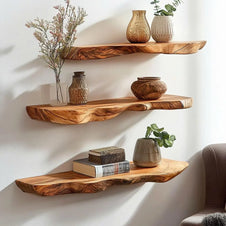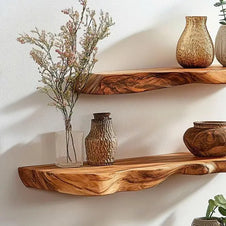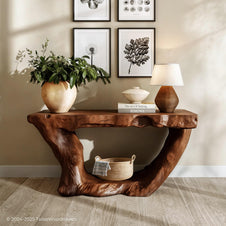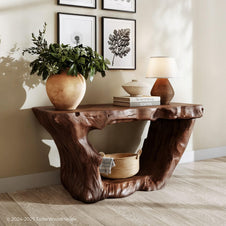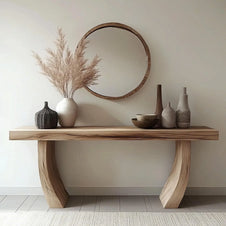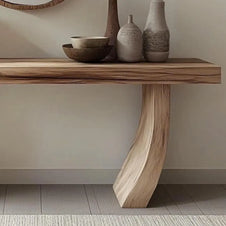When dreaming of a new bookcase, we often picture its look and how it'll hold our books. However, the type of wood used, though seemingly minor, is actually essential. You're likely asking the smart question: what is the best wood to build a bookcase? The answer goes beyond a simple list. "Best" means finding the perfect balance of durability, lasting beauty, and suitability for your unique space and style. Whether you're building custom or buying a masterpiece, understanding wood types is incredibly rewarding. Let's uncover the secrets to choosing a wood that makes your bookcase a cherished, resilient, and beautiful addition to your home.
Understanding Bookcase Wood Essentials
Deciding what is the best wood to build a bookcase is a crucial step. The right wood ensures your DIY project is strong, lasts ages, and perfectly complements your home. While wood offers unmatched warmth, it must also resist sagging or denting from books. Its unique grain and color will ultimately transform a simple shelf into a lasting work of art.
Image 1: Tree Floating Shelves – Wall-Mounted Wooden Tree Shelves for Minimalist, Rustic, or Artistic Storage Displays
 A unique bookshelf crafted from quality wood, much like this work of art - tree bookshelf, will truly elevate your space.
A unique bookshelf crafted from quality wood, much like this work of art - tree bookshelf, will truly elevate your space.
Durability & Strength
Choosing strong wood is critical when asking what is the best wood to build a bookcase . The ideal material needs to handle substantial weight without warping. Hardwoods are usually best for this, resisting dents, scratches, and dreaded shelf sag due to their dense structure. Think about your book collection: heavy textbooks require tougher wood than light paperbacks.
Aesthetic Appeal
Beyond mere utility, the visual appeal of wood elevates a bookcase into a focal point, a key consideration when determining what is the best wood to build a bookcase. Each species boasts its own distinct grain, natural hue, and texture. Oak, for instance, offers a prominent grain with rustic appeal, while maple presents a cleaner, more uniform look. Walnut brings a sense of sophisticated depth, and cherry develops a warm, classic patina over time. Your selection should harmonize with your existing decor.
 For example, beyond merely holding books, this Tree Bookshelf, crafted from solid natural wood with beautiful grain, transforms your wall into an artistic focal point. Buying customized shelves like this saves you the headache of figuring out "what is the best wood to build a bookcase”.
For example, beyond merely holding books, this Tree Bookshelf, crafted from solid natural wood with beautiful grain, transforms your wall into an artistic focal point. Buying customized shelves like this saves you the headache of figuring out "what is the best wood to build a bookcase”.
Cost-Effectiveness
When wondering what is the best wood to build a bookcase, don’t forget to factor in your budget. Sure, softwoods and engineered wood can save money at first - but will they last? Sometimes, spending a bit more on a strong, high-quality hardwood pays off in the long run. It could mean fewer repairs, less sagging, and a bookcase that looks great for years. Think of it not just as a purchase, but as an investment in your home.
Workability
Another key factor in determining what is the best wood to build a bookcase - especially for DIYers - is workability. Softwoods like pine are easier to cut, shape, and assemble, making them ideal for beginners or those using standard tools. In contrast, hardwoods offer greater durability but demand more skill and specialized equipment. Engineered options such as plywood strike a balance, being relatively easy to work with while providing structural stability. Knowing how easy or difficult a wood is to handle will help you choose a material that suits both your skill level and your project goals.
Top Wood Types for Building a Bookcase
Let's explore some popular woods to answer "what is the best wood to build a bookcase." Understanding their unique strengths, weaknesses, and how they balance durability, aesthetics, and cost will guide your perfect choice for any design.
Cherry: Lightweight & Warm
Cherry wood is highly regarded for its warm, reddish-brown tones and distinctive smooth, closed grain – qualities that make it an excellent choice when considering what is the best wood to build a bookcase. It's a popular selection for fine furniture, including bookcases, where its elegant appearance and unique characteristics truly shine.
Despite being slightly softer than some other hardwoods, cherry offers clear advantages for bookcases:
-
Built to Last: This durable hardwood will reliably support your heaviest books without warping, ensuring your bookcase stays sturdy for years.
-
Beauty That Ages Gracefully: Its most enchanting quality is how its color deepens and develops a rich, lustrous patina over time. This means your bookcase gains unique character and warmth, becoming even more beautiful and telling its own story as it ages gracefully in your home.
Oak: Strength & Classic Beauty
Oak has long been a top pick for furniture, and it stands out as a prime answer to the question: what is the best wood to build a bookcase? Renowned for its incredible strength, durability, and distinct grain, it's the go-to wood for heavy-duty bookcases designed to last generations. Oak's robust nature offers compelling advantages, making it an excellent material for your bookcase:
-
Unmatched Strength & Durability: Oak is incredibly strong. Its dense structure makes it highly resistant to warping, sagging, and dents, even when loaded with countless heavy books. This means a bookcase built from oak can truly stand the test of time.
-
Classic & Versatile Beauty: Oak boasts a prominent, open grain that gives it a timeless character. Available in red oak (with a warm, reddish hue) and white oak (lighter, golden, and more water-resistant), it offers a classic appeal that seamlessly fits into traditional, rustic, and even some modern farmhouse styles, enhancing any space with its natural charm.
Maple: Modern Durability & Smooth Finish
Maple stands out as a hardwood champion, consistently appearing in discussions about what is the best wood to build a bookcase. Loved for its incredible hardness and consistent, fine grain, this dense wood is exceptionally durable, making it a prime candidate for bookcases that need to handle heavy loads or a large collection of books. Here are some of Maple’s advantages:
-
Exceptional Durability & Strength: Maple is seriously tough. Its remarkable hardness means it can effortlessly bear significant weight without warping, denting, or sagging, even under the most demanding use. This makes it ideal for a bookcase built to last a lifetime.
-
Clean, Modern Beauty: Maple boasts a smooth, often light-colored surface with a subtle, uniform grain. This allows it to take finishes beautifully, resulting in a sleek, contemporary look that seamlessly integrates into minimalist or modern interior designs without overpowering the space.
 Pick the right wood, and your bookcase will be as strong and stunning as this Tree Shaped Shelf.
Pick the right wood, and your bookcase will be as strong and stunning as this Tree Shaped Shelf.
While we've covered the most popular woods to find out what is the best wood to build a bookcase, the vast world of timber holds countless other materials, each boasting distinct characteristics and visual appeal. To discover more specialized or exotic wood options, you can also consult Duffield Timber.
Woods To Avoid for Your Bookcase
As you seek to understand what is the best wood to build a bookcase, it's just as vital to know which materials to avoid. While many woods might seem suitable, some simply don't offer the necessary strength and longevity for a lasting piece. Here are some options generally not recommended for the structural components of a bookcase:
Very Soft Woods for Heavy Shelves (e.g., Balsa, Poplar without extra support)
-
Too flexible to support weight - prone to bending and sagging
-
Easily dents and scratches
-
Limited longevity, especially for load-bearing shelves
Particle Board
Low-Quality MDF
-
Poor weight support and easily warped
-
Susceptible to water damage
-
Heavy, but lacking in strength
Making the Right Choice for Your Space & Style
Deciding "what is the best wood to build a bookcase" ultimately comes down to aligning the inherent qualities of the wood with your specific needs, aesthetic preferences, and the role the bookcase will play in your home. This section helps you synthesize these factors to make a truly informed decision.
Consider Your Aesthetic
Your bookcase's look is key, especially when asking what is the best wood to build a bookcase for your home's style. The wood's grain, color, and texture define its vibe, from rustic oak to sleek maple or luxurious walnut. Choose wood that perfectly blends with your existing decor, enhancing your space.
 For example, a piece like Tailor Wood Haven's Tree Bookshelf, made from solid natural wood, combines art and organic beauty.
For example, a piece like Tailor Wood Haven's Tree Bookshelf, made from solid natural wood, combines art and organic beauty.
Assess Your Needs (Weight & Usage)
Beyond looks, consider what your bookcase will hold – a vital step in finding what is the best wood to build a bookcase. Heavy books need dense woods like oak or maple to prevent sagging. For busy areas, opt for durable hardwoods. Lighter items or kid's rooms might suit more affordable pine. Your usage dictates the required strength.
Budgeting for Quality Wood
It's tempting to go for the cheapest option when deciding what is the best wood to build a bookcase, but it's smarter to think about the long-term value. High-quality hardwoods like oak offer unmatched durability, while budget-friendly options like pine may require more care. Balance your investment with your desire for a lasting, beautiful piece.
Conclusion
When you're trying to figure out what is the best wood to build a bookcase, remember it's all about finding the perfect mix for your home. From the sheer strength of oak and maple, to the elegant charm of walnut and cherry, or the adaptable nature of pine and engineered woods, each option offers its own special touch. The ideal wood for you will perfectly suit the books you have, the look of your home, and your own personal style.
More than just storage, a bookcase is a wonderful chance to add character, warmth, and a dash of artistry to your living space, especially when you're considering what is the best wood to build a bookcase. By understanding the different types of wood, you ensure your new piece isn't just practical and built to last, but also a beautiful reflection of your unique taste. For those who want furniture that truly serves a purpose while also being a work of art, exploring unique and carefully crafted wood pieces is a journey well worth taking.

